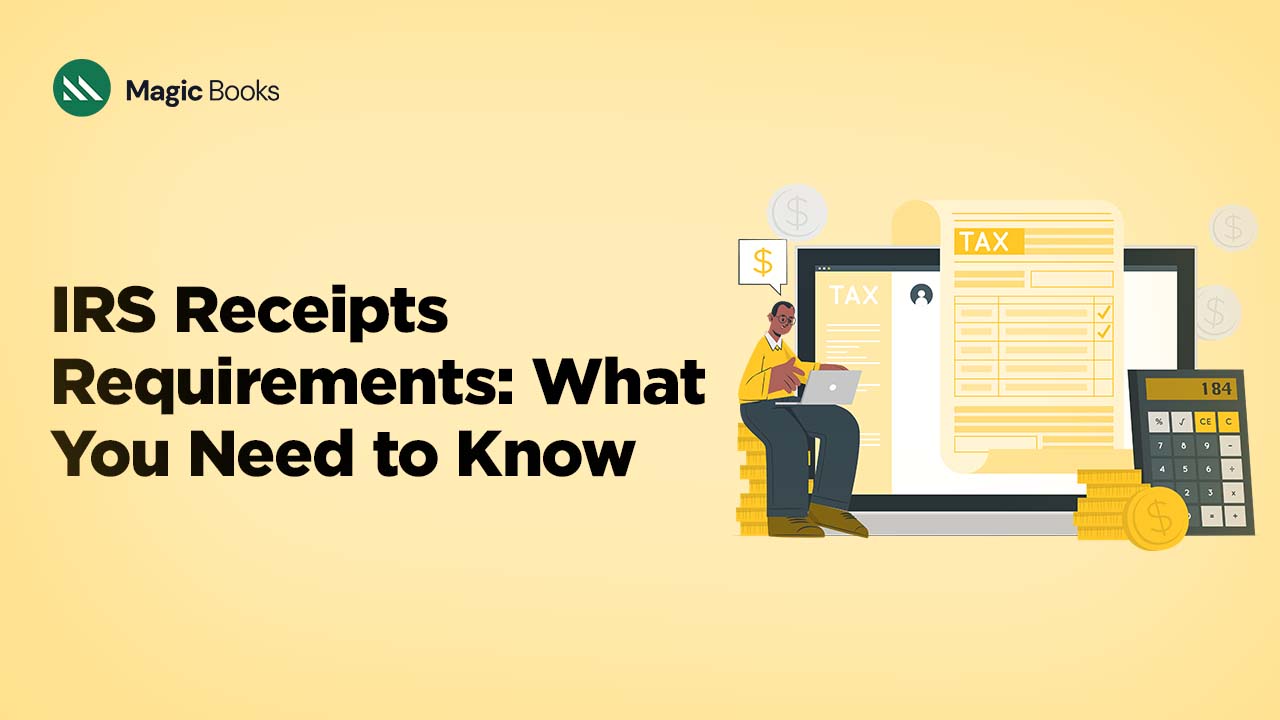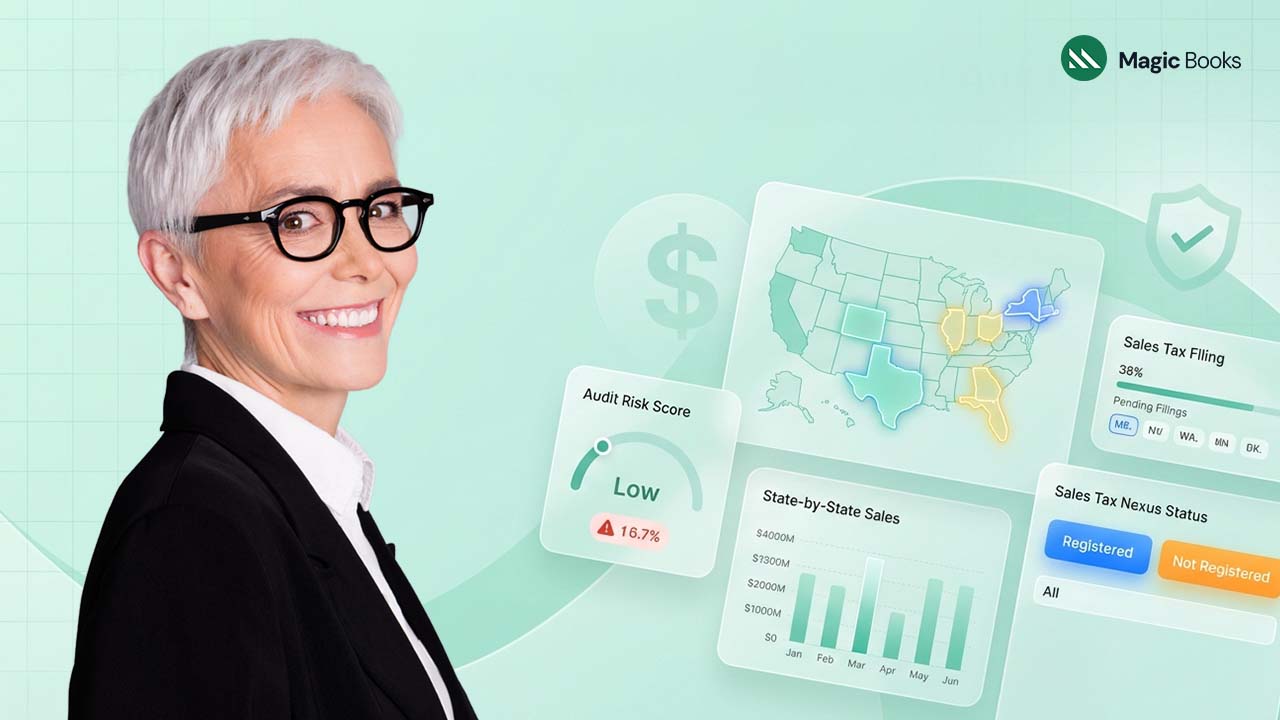Publications of IRS receipts follow more flexible regulations than you might likely expect. You must track your expenses yet you don’t legally need to keep physical receipt records for deducting costs at tax time. Understanding the formal IRS receipt requirements for small businesses helps you monitor your expenses during tax filing season. Your records will be both completely organized and ready to fulfill any potential audit requirements.
Every business needing to file annual tax returns can benefit from this quick guide to tax deductions.
Let’s start with the basics. Your business stands just like you in its taxpayer status. Every tax year your business must submit income tax returns to the IRS together with any tax obligations. The tax liability your business owes depends on your annual revenue after accounting for business costs you deduct.
Spend your business income wisely because you can lower your tax responsibility through eligible fees and business purchases that you deduct from your profits. When you purchase new desk and computer equipment for your business you can lower your taxable earnings by writing off these purchases during tax filing. When you deduct expenses from your income you minimize your taxable income accordingly.
A receipt alone fails to prove an expense qualifies for a deduction with the Internal Revenue Service. Business expenses can be deducted as long as they fulfill IRS criteria for “ordinary” business usage and are both necessary and reasonable, thus making that tropical luxury vacation unlikely for the deduction.
A Business Tax Receipt serves what purpose? Any taxpayer who wants to reduce tax liabilities through business expense deductions must maintain the necessary documentation for possible future IRS examination. These documents should include the following data: type of purchase; price; date of purchase. The proof of a business’ legal claims becomes visible to the IRS through proper documentation when the agency decides to conduct an audit. The IRS demands this documentation under the name of the receipt. Note: The business receipt of this kind is different from state-issued authorization to collect sales tax at designated areas. A business tax receipt functions as written verification of product acquisitions and service payments.
The following are some of the types of records you should keep:
All financial income from business operations constitutes gross receipts. Your business needs to maintain documentation that demonstrates both the sources and amounts from your gross receipts. Documents for gross receipts include the following:
- Cash register tapes
- Payment records include cash deposits alongside records of credit card transactions
- Receipt books
- Invoices
- Forms 1099-MISC
Master items that you acquire to later redistribute to your clients make up your purchases. Manufacturers as well as producers must track all raw materials or parts purchased to create finished products through manufacturing. Supporting documentation required for payee identification should demonstrate a clear amount description of each purchase identifying the payee together with payment proof and date of purchase response and a comprehensive description of item contents. Documents for purchases include the following:
- Paid checks together with various documents that demonstrate monetary transfer or electronic fund transfers
- Cash register tape receipts
- Credit card receipts and statements
- Invoices
Note: Organizations need multiple supporting documents to prove the entire purchase transaction.
The costs that you pay to maintain your business operations constitute business expenses. These costs exclude purchase amounts. Your document supporting expenses must contain identification of payee and payment details with mandated papers showing payment evidence and the expense date including evidence of the business-related purchased or received goods or services. Documents for expenses include the following:
- Documented payments are shown through canceled checks and electronic fund transfer proofs.
- Cash register tape receipts
- Account statements
- Credit card receipts and statements
- Invoices
Note: All expense elements require multiple types of supporting documents for complete substantiation.
The costs associated with travel activities together with transportation and entertainment expenses and gifts require proper substantiation.
All deductions related to travel, entertainment, gifts, and transportation demand proper documentation that proves each expense element.
Within your business, you use property such as machinery and furniture that belongs to you as assets. Your business needs records to verify specified information regarding business assets. Business asset records enable you to calculate depreciation values as well as establish gain or loss calculations at disposition time.
Documents for assets should show the following information:
All records need to include acquisition timelines together with methods for asset ownership acquisition.
- Purchase price
- Cost of any improvements
- Section 179 deduction taken
- Deductions taken for depreciation
- You can take deductions for casualty losses which include damage from fires or storms
- How you used the asset
- The dates when you purchased or sold the asset together with the associated methods
- Selling price
- Expenses of sale
- The subsequent papers will display this data.
- Purchase and sales invoices
- Real estate closing statements
- Along with payee identification and receipt information, the documents present the amount paid and details about electronic payment transfers.
Employment taxes
Special documentation requirements exist for employment tax records. You must maintain employment records for a minimum period of four years.
Receipts for All Business Expenses Over $75
According to the IRS regulations people need to maintain written documentation for payments above $75. The IRS demands written evidence through receipts for payments exceeding $75.
You need to maintain written documentation anytime you pay without receiving an official receipt. Committing payments over $75 to paper requires using a computer log, spreadsheet, or diary. Every payment exceeding $75 requires written documentation which includes payment amount, business reason for payment business name and address (when separate from your own information) date of payment, and recipient information.
Maintain documentation for every expense related to your automobile including fuel purchases as well as oil changes incidentals repairs insurance tires and maintenance. Business vehicle travel details must stay distinct from the records for personal car usage. When operating vehicles that you personally own you have the option to deduct the calculated business-driven miles while adding your maintenance expenditures (including gasoline cost, oil changes, and repair charges). Businesses can deduct lease payments together with business-driven miles for cars they lease. The business miles you drive if you operate a rental car qualify as tax-deductible expenses.
Note down all investment expenses made for your home office including money paid for electricity heating fuel, cleaning products and telecommunication utilities and insurance. A separate dedicated business telephone line costs can be deducted from your taxes if you have a business message enabled on your voicemail. To claim an office expense deduction you must confirm that your space meets the criteria for legitimate office use.
Your business may choose any method of recordkeeping that demonstrates all income amounts and expenses in a transparent format. The choice of business activity guides your requirements when filing federal taxes. Every business recordkeeping system should contain a compact overview of what took place in your transactions. Standard business records contain this summary which exists within the company’s financial books and accounts primarily in journals and ledgers. Every book entry reflecting business income must include deductions along with credits before displaying final gross income totals. Most small business entities rely on their business checking accounts for recording financial entries into business records.
Businesses select either electronic accounting software programs or alternative electronic methods to record and arrange their financial data. Electronic accounting software programs and other electronic systems selected for recordkeeping purposes must satisfy fundamental recordkeeping principles that were mentioned previously. The same requirements that apply to printed books and records apply to electronic bookkeeping systems.
Reimbursements
Most business owners spend business funds through their personal banking channels as they buy needed items for their operations. Other accounts created for business purposes enable the transfer of money from business transactions into individual account assets. Business owners have legal access to these expenses yet they typically lose track of claiming these business deductions. Middle-class business owners sometimes fail to decrease their tax burden because they lack digital records for necessary documentation. Every business owner must take one of these two steps either create a separate business bank account or document each financial transaction so they maintain their digital records
How many years must I maintain all business receipts?
All business receipts require minimal three-year retention. You may need to keep your receipts for up to six years according to certain special IRS requirements. Taxpayers with tax underpayments exceeding 25 percent should maintain their records for a period not exceeding six years.
Online bank records and merchant websites give you access to past documentation for the purposes of mining older records. You can’t rely on finding old documents on these websites because older records may not exist and you won’t get access to payments from discontinued accounts or closed stores with modified websites.
Save monthly and yearly digital PDF downloads of receipts centrally within separate folders. The process of receipt scanning happens using digital receipt apps but preserve them in backed-up folders conveniently accessible for future access.
What should you do when your business receipts get lost?
During an audit, you may recover missing business expense receipts when additional documentation sources allow you to reconstruct the information. Official documents used to substantiate expenses include bank statements and credit card reports as well as canceled checks and deposit statements procurement documents business emails and paid billing verification.
You can get your vendor to issue a receipt retrospectively should you need verification of an expense. When audited the Cohan rule enables you to make reasonable guesses about expenses as long as you used accurate documentation prior to the audit.
The IRS always holds you accountable to keep appropriate records for their required length of storage time. Knowledge of IRS requirements when it comes to expense receipts helps taxpayers experience less anxiety during tax season. The system provides you with assurance to claim all allowable tax deductions effectively in your small business operation.
Frequently Asked Questions
What is a receipt IRS?
The Internal Revenue Service considers receipts IRS to be proof showing business expense documentation. The IRS requires business receipts as documented proof to meet their tax deduction rules. There are multiple types of receipts that support business expenses including invoices and cash register tapes and credit card slips both digital and physical. Having substantive receipts is absolutely necessary because they provide the tax return system with accurate expense reporting capabilities.
Businesses may take tax deductions for certain expenses without receipts as long as those expenses remain below $75.
The businesses can generally deduct any expense costs under $75 to the IRS if they are unaccompanied by a receipt. Even though keeping track of small expenses is ideal because they expand into larger amounts eventually businesses should still maintain their documentation. Even without a receipt, you must still record your expenses properly for tax purposes when filing your return.
When should I hold onto my receipts?
A business needs to store records with receipts for both three years starting from their original tax return date and two years from the payment date (with the longer term requirement applying). Businesses must keep receipts protecting bad debt deductions and worthless securities losses for a minimum period of 7 years.
The IRS accepts a credit card statement when a receipt is unavailable.
While credit card statements work for tax deduction proof of purchase the IRS might want to see original receipts for some conditions. Credit card statements display a vendor’s name together with the purchase date and total costs but lack a detailed item breakdown. Consumers must maintain both statement records and itemized receipts to achieve complete proof of purchases.



